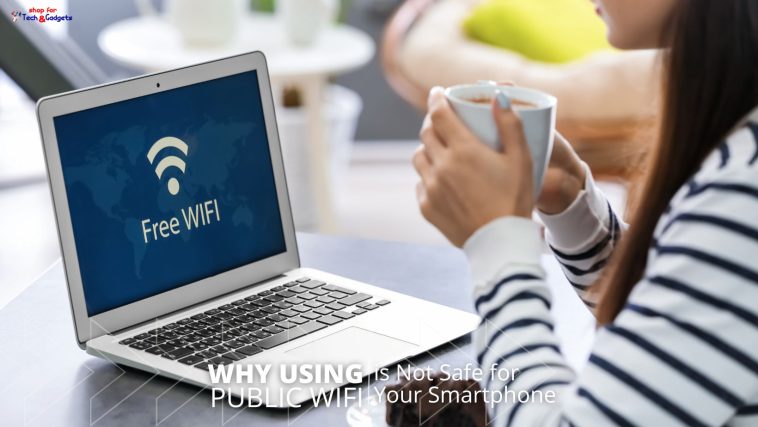Imagine you’re at your favorite coffee shop, sipping a latte, and you decide to check your email or browse social media. The café offers free public WiFi, so you connect without a second thought. It’s convenient, right? But have you ever considered the risks involved? Public WiFi networks, while handy, can be a playground for cybercriminals looking to steal your personal information.
In today’s digital age, our smartphones are extensions of ourselves, holding everything from personal photos to banking details. Connecting to unsecured public WiFi can expose this sensitive data to prying eyes. This article will delve into why using public WiFi is not safe, especially when accessing it with your personal smartphone. We’ll explore the potential threats, what information can be compromised, and how you can protect yourself.
The Allure of Public WiFi
Public WiFi is everywhere—cafés, airports, hotels, and even public parks. The convenience is undeniable:
- Free Access: No need to use your mobile data plan.
- Ease of Use: Connect with a simple tap.
- Ubiquity: Available in most public places.
However, this convenience comes at a cost. Public WiFi networks are often unsecured, making them prime targets for hackers.
Why Using Public WiFi is Not Safe
Lack of Encryption
Many public WiFi networks lack proper encryption. Encryption is like a secret code that protects your data as it travels from your device to the router. Without it, anyone on the same network can intercept your data.
Man-in-the-Middle Attacks
In a Man-in-the-Middle (MitM) attack, a hacker intercepts communication between your device and the internet. This means they can see the websites you visit, the information you send, and even alter the data without your knowledge.
Rogue Hotspots
Cybercriminals can set up fake WiFi networks, known as rogue hotspots, with names similar to legitimate ones (e.g., “CoffeeShop_Guest”). When you connect, you’re actually linking to the hacker’s network, giving them direct access to your device.
Malware Distribution
Unsecured networks can be used to distribute malware. Hackers can inject malicious software into your device without your knowledge, leading to data theft or damage.
What Can Be Compromised?
When you connect your smartphone to public WiFi, several types of information are at risk:
- Personal Data: Photos, contacts, and personal messages.
- Login Credentials: Usernames and passwords for various accounts.
- Financial Information: Banking details, credit card numbers, and transaction history.
- Sensitive Communications: Emails and messages containing confidential information.
Real-World Examples
To understand the gravity of the situation, consider these real-world incidents:
- 2017 Coffee Shop Hack: In Buenos Aires, hackers infiltrated a public WiFi network in a coffee shop, stealing customers’ personal data and login credentials.
- Airport WiFi Breach: Several international airports have reported incidents where hackers set up rogue hotspots, tricking travelers into connecting and then stealing their information.
Practical Steps to Help You Protect Your Family
1. Set Up a VPN for All Devices
One of the most effective ways to protect yourself and your family is by using a VPN (Virtual Private Network). A VPN encrypts internet traffic, making it much harder for hackers to intercept any sensitive data. It also helps protect you from potential threats on unsecured WiFi networks. Make sure everyone’s devices, including smartphones, tablets, and laptops, are connected to a reliable VPN when they access any WiFi, especially in public places.
2. Disable Automatic WiFi Connections
Most smartphones and devices have a setting that automatically connects to open WiFi networks. This can be a serious risk, especially when traveling, as your family members may unknowingly connect to a harmful network. Disable this feature on all devices to ensure that WiFi connections are only made manually and deliberately.
3. Educate Your Family About the Risks
The best defense against any danger is awareness. Take the time to explain to your family members, especially your kids, the risks of using public WiFi and why it’s essential to be cautious. Teach them about the potential consequences, such as identity theft and the exposure of sensitive information like passwords and bank details. When traveling, make sure everyone is on the same page about which networks are safe to use.
4. Use Mobile Data Instead
When traveling or in public spaces, encourage your family to use mobile data rather than relying on public WiFi. While mobile data might not always be free, it’s much safer than connecting to unknown networks. If they must use WiFi, encourage them to always verify the network’s authenticity before connecting.
5. Activate Two-Factor Authentication
For added security, enable two-factor authentication (2FA) on accounts like email, social media, and banking. This adds an extra layer of protection, requiring a second verification step (such as a code sent to their phone) in addition to the password. Even if hackers intercept login credentials over public WiFi, they won’t be able to access accounts without the second factor.
6. Monitor Your Devices for Suspicious Activity
Keep an eye on your family’s devices for any signs of suspicious activity. If you notice unfamiliar apps or sudden battery drain, it could be a sign that malware has been installed. Regularly check for updates to your security software and ensure all devices are protected with strong antivirus tools.
7. Use Secure Websites (HTTPS)
Remind your family members to always check for HTTPS in the URL before entering sensitive information online. This ensures that the website is using encryption to protect their data. Avoid entering personal details like passwords or credit card numbers unless the site shows the “HTTPS” and a padlock symbol in the browser.
8. Consider a Portable WiFi Router
When traveling abroad or in unfamiliar public places, a portable WiFi router can offer a secure alternative to public networks. These devices use cellular data to provide internet access, bypassing the need to rely on public WiFi altogether. They’re especially useful when you’re in a foreign country where public WiFi might not be as secure.
By following these steps, you can reduce the likelihood of your family becoming victims of cybercrime while using public WiFi. It’s all about staying proactive and aware of the risks, especially when traveling or in busy public places.
Conclusion
In our interconnected world, staying connected is essential, but so is protecting our personal information. Public WiFi networks, while convenient, pose significant security risks, especially when accessed with personal smartphones. By understanding these risks and implementing the recommended precautions, you can safeguard your data from potential threats.
Remember, the convenience of free public WiFi isn’t worth the potential cost of compromised personal information. Stay vigilant, use secure connections, and prioritize your digital safety.




